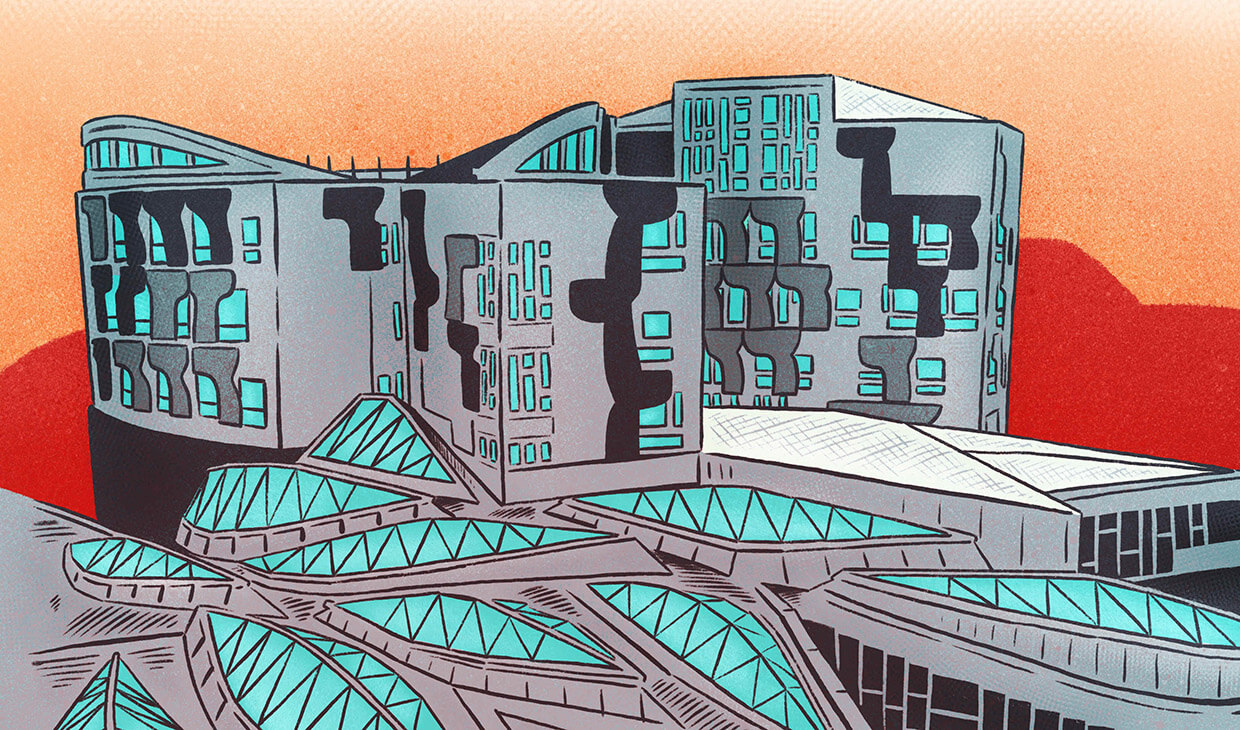Graphic novel illustrating history of Scottish Parliament backed by crowdfunding campaign
A crowdfunding campaign to support the creation of a graphic novel – telling the story of the Scottish Parliament – has been launched.
/filters:format(webp)/filters:no_upscale()/prod01/cdn/media/stirling/news/news-centre/2019/september/scot-par-banner.jpg)
A crowdfunding campaign to support the creation of a graphic novel – telling the story of the Scottish Parliament – has been launched.
The Scottish Political Archive at the University of Stirling is leading the drive to raise funds to create the book.
The Scottish Parliament: A Graphic History will set out in plain and accessible language – and through rich and vivid artwork – how the Scottish Parliament really works.
In 1999, after an absence of three hundred years, the Scottish Parliament was reconvened. Since then, the Scottish Parliament has been responsible for designing, deciding and introducing laws across an ever-growing range of areas, from agriculture to welfare.
These laws directly affect the lives of millions of people living in Scotland, all of whom have a stake in understanding how their representatives act on their behalf.

Dr Emily St Denny, Lecturer in UK politics and policymaking, with a particular focus on devolved Scotland and Wales, said: “We are passionate about the Scottish Parliament – its history, its architecture, the way it functions, the people who work within it and how it’s changed over time. We came up with the idea for the book because were tired of only writing about the Parliament in lengthy academic tomes and wanted to share our fascination with Holyrood with non-experts in an engaging and accessible manner.”
Dr Peter Lynch, Senior Lecturer in Scottish and European Politics at Stirling, said: “Because the story of the Scottish Parliament and how it works is as dynamic as it is fascinating, we believe it is best told using eye-catching graphic images.
“We are committed to giving it the best look and feel we can and are working with Jules Scheele, a freelance illustrator, comics artist and graphic facilitator based in Glasgow. Jules will create original artwork responding to the story of the Parliament and the visual material held in the archive.”
Campaign
By drawing on the Scottish Political Archive’s extensive collection of documents and artefacts from the Campaign for a Scottish Assembly (and after), the book will open up and bring to life Scotland’s contemporary political heritage. The book will merge art and information, including reproductions of rare archive photographs and campaign materials.
Sarah Bromage, Archivist for the Scottish Political Archive at Stirling, said: “We are keen to let as many people know about the collections of the archive as possible. I spend a large part of my working life looking through political leaflets and ephemera and I am delighted to show the collections in this exciting and innovative way.”
The book weaves together three themes:
- The road to Holyrood: drawing on archive material and oral histories from those who took part in the campaign for a Scottish Assembly, the book will retrace how the Scottish Parliament come to be (re)established. It will introduce readers to the early hopes and expectations the people of Scotland, and their elected representatives, had for this new institution.
- How the Parliament works: drawing on the authors’ research expertise, the book will present an evidence-based account of how Scottish parliamentary democracy works, and how laws and policies are made in Scotland. It will introduce readers to the Parliament’s committee system, to the day-to-day life of Members of the Scottish Parliament, and to the mechanisms that citizens have at their disposal to influence their Parliament’s work. In doing so, it will present a balanced view of what has worked well and what perhaps needs to change to meet the changing needs of Scottish communities.
- How the Parliament has evolved: the book will present an accessible overview of parliamentary reform, by revisiting and explaining how the processes and functions of the Scottish Parliament have changed over the last decade. Featuring the voices of those who worked to reintroduce a Parliament in Scotland, as well as that of the people who have worked within it, it will invite readers to reflect on the challenges and opportunities facing the Scottish Parliament going forward.
The money raised will pay for the production costs of the book. These are illustration and design work and printing of the finished graphic novel. Copies of the book will be distributed freely to all secondary schools and public libraries in Scotland.
To find out more and pledge your support, you can visit the crowdfunding page at www.crowdfunder.co.uk/scottishparliamentgraphichistory.
Read more in our public policy blog article.
